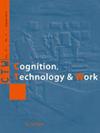COVID-19封锁后三级保健医院恢复常规牙科手术的安全规程。
IF 3.4
3区 工程技术
Q2 ENGINEERING, INDUSTRIAL
引用次数: 1
摘要
新冠肺炎疫情的爆发对牙科造成了很大影响。由于气溶胶的产生,牙科手术被认为是COVID-19感染转移的方式之一。为了防止这种病毒通过牙科手术传播,世界卫生组织(WHO)、疾病控制和预防中心(CDC)和各国卫生部发布了指导方针。目的建立在个人防护装备(PPE)危机能力情况下进行牙科手术的安全规程。方法根据巴基斯坦卫生部提供的指南,在卫生保健人员接种COVID-19疫苗前制定实施牙科手术的策略。这些准则还符合世卫组织和疾病预防控制中心提供的战略。40名卫生保健专业人员(HCPs)参加了这项研究,并被分为两组。A组进行非气溶胶产生程序(non- AGPs), B组进行气溶胶产生程序(AGPs)。从2020年8月1日至2021年3月31日,共进行了6372次气溶胶产生程序。该方案的安全性是通过HCPs感染COVID-19的数量来确定的。结果B组仅有1例HCP感染或在agp前报告有症状。结论在2019冠状病毒病大流行期间,基于巴基斯坦牙科系统的报告策略被认为是安全的,可以在全球范围内实施。本文章由计算机程序翻译,如有差异,请以英文原文为准。
Safe protocol of resuming routine dental procedures in a tertiary care hospital setting post COVID-19 lockdown.
BACKGROUND
The outbreak of the COVID-19 pandemic greatly affected dentistry. Dental procedures are considered one of the modes of transfer of COVID-19 infection due to generation of aerosols. To prevent transmission of this virus through dental procedures, guidelines were issued by the World Health Organisation (WHO), Centers for Disease Control and Prevention (CDC) and Ministry of Health of each country.
OBJECTIVE
The aim of this study is to establish a safe protocol for performing dental procedures in a crisis capacity situation of personal protective equipment (PPE).
METHODS
A strategy for performing the dental procedures was formulated in accordance with the guidelines provided by the Ministry of Health, Pakistan before vaccination of HCPs against COVID-19. These guidelines also accorded the strategies provided by the WHO and CDC. 40 health care professionals (HCPs) participated in the study and were divided in two groups. Group A performed non-aerosol generating procedures (non- AGPs) and group B performed aerosol generating procedures (AGPs). A total of 6372 aerosol generating procedures were performed from 1 August 2020 to 31 March 2021. The safety of this protocol was established by the number of HCPs contracting COVID-19 infection.
RESULTS
Only 1 HCP contracted COVID-19 infection or reported any symptoms preceding the AGPs from group B following the formulated strategy.
CONCLUSION
Reported strategy based on the dental system in Pakistan is considered safe to be implemented worldwide during the COVID-19 pandemic.
求助全文
通过发布文献求助,成功后即可免费获取论文全文。
去求助
来源期刊

Cognition Technology & Work
ENGINEERING, INDUSTRIAL-
CiteScore
6.90
自引率
7.70%
发文量
26
审稿时长
>12 weeks
期刊介绍:
Cognition, Technology & Work focuses on the practical issues of human interaction with technology within the context of work and, in particular, how human cognition affects, and is affected by, work and working conditions.
The aim is to publish research that normally resides on the borderline between people, technology, and organisations. Including how people use information technology, how experience and expertise develop through work, and how incidents and accidents are due to the interaction between individual, technical and organisational factors.
The target is thus the study of people at work from a cognitive systems engineering and socio-technical systems perspective.
The most relevant working contexts of interest to CTW are those where the impact of modern technologies on people at work is particularly important for the users involved as well as for the effects on the environment and plants. Modern society has come to depend on the safe and efficient functioning of a multitude of technological systems as diverse as industrial production, transportation, communication, supply of energy, information and materials, health and finance.
 求助内容:
求助内容: 应助结果提醒方式:
应助结果提醒方式:


